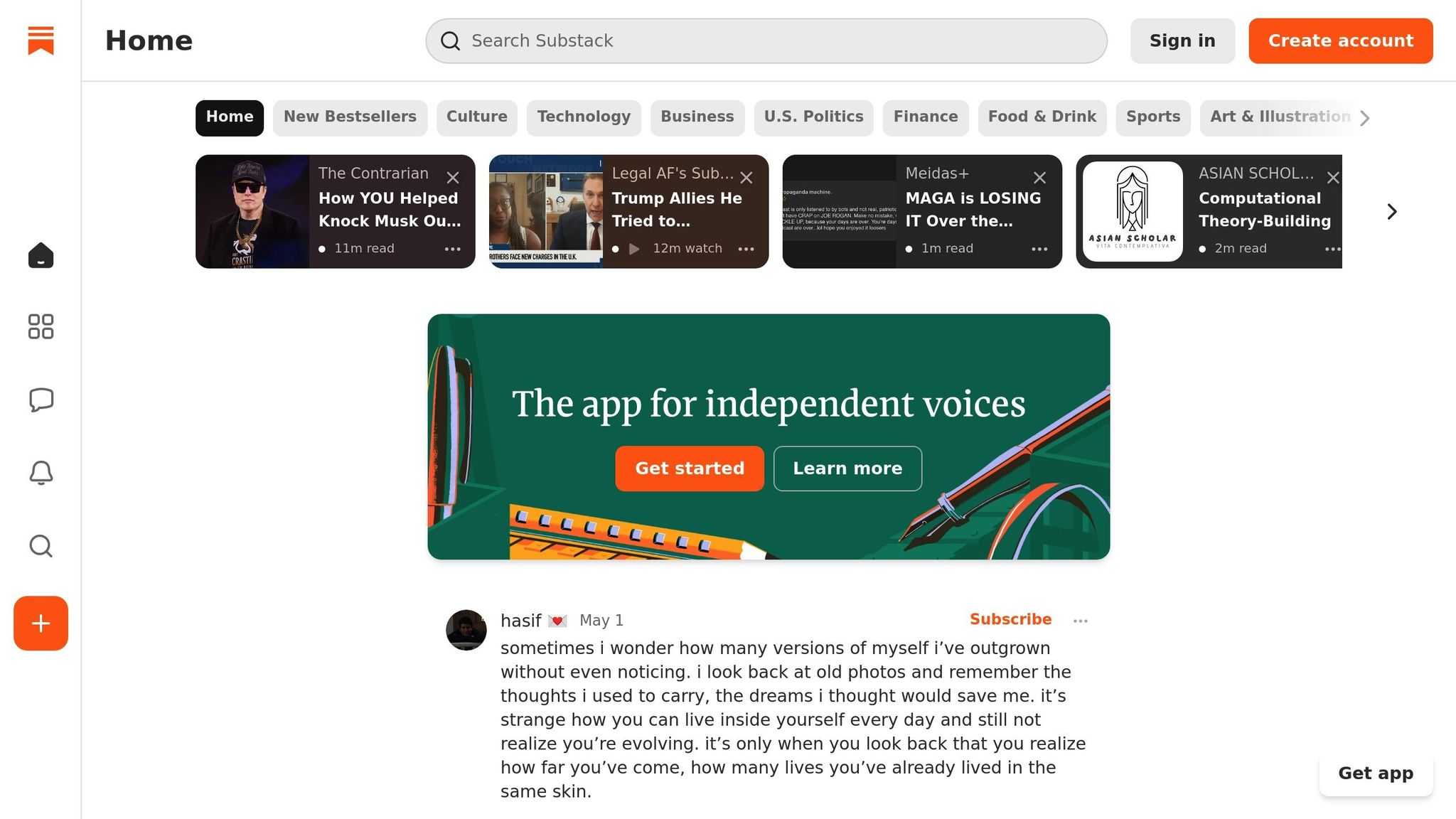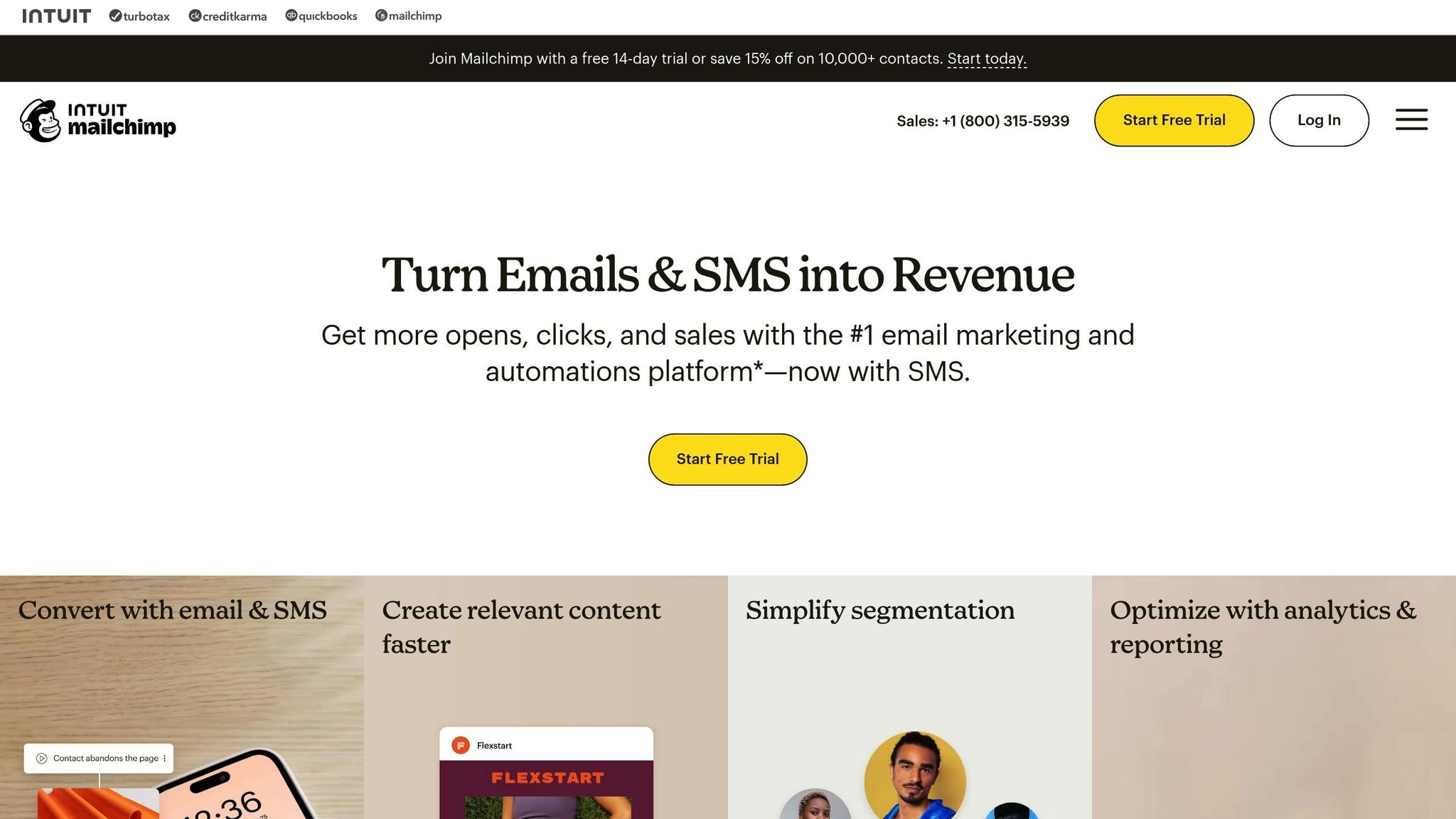Hidden fees in newsletter platforms can cost you more than expected. Here’s what you need to know:
- Subscriber Overages: Platforms like Mailchimp charge extra if you exceed subscriber limits. For example, a $29/month plan for 1,500 contacts can jump significantly if your list grows.
- Revenue Cuts: Substack takes 10% of your earnings, plus around 4% in payment processing fees, cutting into your profits.
- Inactive Contacts: Some platforms, like Mailchimp, charge for unsubscribed or inactive contacts unless you manually remove them.
- Payment Processing Fees: Fees like 2.9% + $0.30 per transaction (e.g., Stripe) are unavoidable but vary by platform.
- Setup and Migration Costs: Enterprise platforms often have hidden fees for onboarding, integrations, and data migration.
How to Avoid Hidden Fees:
- Always read the platform’s terms and pricing details.
- Regularly clean your subscriber list to avoid paying for inactive contacts.
- Compare platforms carefully - some, like Beehiiv, don’t take revenue cuts, while others like Substack do.
- Negotiate fees for enterprise plans and monitor your usage to avoid unexpected costs.
Key Tip: Look beyond the advertised price. Hidden fees can add up quickly, so choose a platform that’s transparent and scalable for your needs.
Best Email Marketing Tool for 2025 (No Extra Fees!)
Types of Hidden Fees You'll Find
Newsletter platforms often come with pricing structures that hide extra costs. Knowing what to look out for can save you from unexpected charges. Here's a closer look at some common hidden fees and where they tend to show up.
Subscriber Limits and Overage Charges
Most platforms base their pricing on subscriber tiers. For example, Mailchimp charges $29 per month for up to 1,500 contacts. If you exceed that limit, you'll face overage fees or be forced to upgrade to a higher, more expensive tier. Similarly, platforms like Kit and Beehiiv use tiered pricing with their own subscriber and email limits.
Let’s say you’re on Mailchimp’s $29 plan with 1,500 subscribers. If your list grows beyond that, you might have to jump to a more expensive plan, which can dramatically increase your monthly costs. To avoid these surprises, choose a platform that scales with your growth without penalizing you for success.
Revenue Cuts and Payment Processing Fees
If you monetize your newsletter, revenue-based fees can eat into your earnings. Substack, for instance, takes a 10% commission on your revenue. Combine that with payment processor fees (around 4%), and you’re looking at roughly 14% of your revenue going to fees. While this might seem manageable for smaller newsletters, it becomes a significant expense as your audience grows.
Here’s an example: A newsletter with 100,000 total subscribers and 10,000 paid subscribers at $60 per year generates $600,000 annually. Using Substack in this scenario could cost you over $50,000 more per year compared to platforms with flat fees. Beehiiv, for instance, doesn’t take commission fees, passing only Stripe’s transaction costs to you. Kit, on the other hand, charges a subscription fee plus 3.5% and $0.30 per transaction on paid subscriptions.
Additionally, payment processing fees are unavoidable. In 2023, the average interchange fee was 2.24%, amounting to a record $172.05 billion, with over 80% of these fees coming from Mastercard and Visa. While you can’t escape processing fees, choosing a platform with reasonable commission rates can help you retain more of your revenue.
Billing for Inactive and Unsubscribed Contacts
Some platforms charge you for inactive or unsubscribed contacts, which can inflate your costs unnecessarily. For instance, AWeber bills for unsubscribed contacts, meaning you could still be paying for people who are no longer on your list unless you manually remove them.
This practice doesn’t just cost money - it can also harm your sender reputation. Email providers may notice if a large portion of your audience doesn’t engage with your emails, which could land your messages in spam folders.
Dawn Martinello, who founded a virtual assistant company in 2009, uses a 60-day engagement cycle to address this. Subscribers who don’t click any links within 60 days are marked as inactive and sent a re-engagement series. If they still don’t interact, they’re removed from the list. Regularly cleaning your subscriber list not only saves money but also improves email deliverability. After all, it costs five times more to acquire a new customer than to keep an existing one.
Some platforms, like Brevo, take a more straightforward approach by billing based on the number of emails sent each month rather than the size of your contact list. This means inactive subscribers won’t increase your costs. Similarly, MailerLite’s free plan allows for more subscribers and emails without charging for unsubscribed contacts.
Next, we’ll explore practical ways to spot and avoid these hidden fees.
Real Examples of Hidden Fees by Platform
Here are some real-life cases that shed light on how hidden fees can impact your bottom line.
Substack: 10% Revenue Share

Substack takes a 10% cut from all your subscription earnings, on top of Stripe's payment processing fees, which are 2.9% plus 30¢ per transaction. Let’s break it down: if you have 1,000 paying subscribers at $5/month, that brings in $5,000. Substack’s share ($500) and Stripe’s fees (around $445) leave you with roughly $4,055 - almost 19% of your revenue gone.
As your subscriber base grows, these fees add up quickly. Journalist Matthew Yglesias points out:
"Substack charging 10 percent rather than 5 percent shifts the cost burden between creators and readers".
Adding to the challenge, only about 5.7% of Substack readers, on average, opt for paid subscriptions. This means building a large free audience is crucial to make the platform sustainable.
Mailchimp: Fees for Unsubscribed Contacts

Mailchimp has a controversial policy where unsubscribed contacts still count toward your total contact limit. For instance, if you're on their Standard plan ($20/month for 500 contacts) and 200 people unsubscribe, you’ll still be charged as if you have 500 active contacts. If you start with 1,000 subscribers and lose 400, you’ll need to manually archive those unsubscribed contacts to avoid paying for them.
The costs can escalate quickly. A business might find itself upgrading from the Standard plan ($20/month) to the Premium plan ($350/month) simply because of inactive contacts. To avoid these unnecessary charges, regularly clean your email lists by archiving or deleting unsubscribed contacts.
Enterprise Platforms: Setup and Migration Expenses
Enterprise-level platforms often come with hidden setup and migration costs. These platforms require integrating with various tools for marketing, sales, and customer service, which can be time-intensive and resource-heavy.
Hidden fees in this category may include data migration, system integrations, and prolonged implementation timelines, all of which can delay campaigns and revenue generation. Being aware of these potential costs can help you better prepare and negotiate when choosing an enterprise platform.
sbb-itb-2653e19
How to Find and Avoid Hidden Fees
Hidden fees can sneak up on your business and add unnecessary costs. Here are some practical ways to uncover and avoid them to protect your budget.
Review Your Platform's Terms and Billing
Before signing up for any platform, take a close look at its terms and billing details. Research shows that about one-third of U.S. companies regret their purchases due to unexpected fees or onboarding hurdles. Pay attention to vague pricing language and dig into sections like the FAQ and Terms & Conditions. Ask direct questions about potential costs, such as onboarding fees, setup charges, data migration expenses, and third-party integration costs.
Once you’ve nailed down the fee structure, keep your usage streamlined to avoid racking up unnecessary charges.
Clean Up Your Subscriber Lists
Inactive or bouncing email contacts can inflate your costs. Regularly review your subscriber list and remove those who don’t engage. Define what counts as an unengaged subscriber - typically someone who hasn’t interacted in three months - and try re-engagement campaigns to win them back. Offer incentives like discount codes or free shipping to encourage interaction. If these efforts fail, it’s better to remove these contacts to avoid ongoing fees.
Focus your email efforts on active subscribers by segmenting your list based on engagement. Always include an easy-to-find unsubscribe link, and consider offering an “opt-down” option for those who prefer fewer emails instead of unsubscribing completely. Automating tasks like double opt-ins and real-time email validation can also improve your list quality and save time.
A cleaner, more engaged list not only reduces costs but also improves your email marketing performance.
Negotiate Better Enterprise Deals
Enterprise platforms often offer room for negotiation, especially when it comes to setup and migration fees. With careful planning, you could cut costs by as much as 25%. Start by researching the platform’s pricing structure and setting clear negotiation goals. Long-term contracts can often unlock discounts, and understanding your specific usage can help you pinpoint areas for savings.
If negotiations stall, consider adding value to the deal. For example, offer to participate in a case study, provide referrals, or give testimonials. Make sure your internal team is aligned before heading into discussions. For cloud-based platforms, adopting FinOps practices to track usage and costs can uncover areas to optimize and provide solid data for future negotiations.
Building strong relationships with your account manager can also go a long way. A good rapport may lead to more favorable terms and better support down the line.
Key Points and Best Practices
Understanding hidden fees in newsletter platforms can help your business avoid unnecessary expenses - potentially saving hundreds or even thousands of dollars each year. With 35% of businesses regretting recent software purchases due to unexpected costs, keeping a close eye on fee structures is critical to protecting your budget. Here’s how you can take control.
Hidden fees often come in the form of subscriber overage charges, revenue cuts like Substack’s 10% fee, and billing for inactive contacts. On top of that, some platforms tack on charges for setup, migration, or premium features that aren’t clearly disclosed in their basic pricing.
"Software investments drive growth, but hidden costs can erode ROI if unaddressed. Asking the right questions upfront ensures you're making a decision that supports both your budget and your long-term goals." - SilkChart
Here are some key practices to minimize hidden costs:
- Scrutinize terms and billing for transparency. Don’t just rely on the advertised monthly rates. Ask pointed questions about overage fees, subscriber limits, and any additional charges that might crop up later.
- Keep your subscriber lists active and up-to-date. This not only controls costs but also improves deliverability, as discussed earlier in the section on list management. For enterprise-level solutions, come prepared to negotiate - usage projections and long-term contracts can often lead to better deals.
- Track your usage patterns regularly. Monitoring subscriber growth, email frequency, and feature usage helps you stay within plan limits and provides valuable data for future platform evaluations or contract negotiations.
When comparing platforms, dig deeper than just the base price. A platform advertising $25/month might seem affordable but could end up costing much more after factoring in transaction fees, overages, and required add-ons. Always calculate the total cost of ownership based on your specific usage.
Finally, remember that the cheapest option isn’t always the best value. Look for a platform that offers clear pricing, the features you actually need, and the flexibility to grow without hitting unexpected fees. Taking the time to evaluate your options thoroughly will save you from costly surprises and the hassle of switching platforms later.
FAQs
How can I manage my subscriber list to avoid unexpected fees on newsletter platforms?
Keeping your newsletter costs in check starts with maintaining a clean and updated subscriber list. Many platforms count inactive subscribers and even those who’ve unsubscribed toward your total limit, which can lead to unexpected charges.
A smart way to manage this is by implementing a double opt-in process. This ensures that only people who are genuinely interested in your content make it onto your list, reducing churn and keeping your expenses manageable.
It’s also a good idea to keep a close eye on your subscriber count. Regularly segment or archive inactive contacts to ensure your list remains engaged and cost-efficient. By taking these steps, you can avoid unnecessary fees and stay comfortably within your plan’s limits.
How can I reduce the impact of platform fees and payment processing costs on my newsletter earnings?
To help manage platform fees and payment processing costs, here are a few strategies worth considering:
- Talk to your payment processor: Sometimes, reaching out directly can lead to better terms or reduced fees.
- Introduce subscription perks: Offer tiered pricing or discounts for longer subscriptions to encourage steady, predictable revenue.
- Prioritize customer retention: Focus on keeping your existing customers happy to maintain consistent income and minimize churn.
Additionally, make it a habit to review your financials regularly. This can help you spot areas to trim unnecessary expenses and fine-tune your pricing for better profitability.
How can I identify and address hidden fees in enterprise newsletter platforms?
How to Spot and Handle Hidden Fees in Enterprise Newsletter Platforms
When evaluating enterprise newsletter platforms, it’s crucial to dig into the details of service agreements and pricing structures. Hidden fees often lurk in the fine print, covering things like charges for exceeding subscriber limits, accessing advanced tools like automation, or using premium support services. These extra costs can pile up fast, so make sure you have a clear understanding of the total cost before committing.
If you come across unexpected fees, don’t just accept them - negotiate. Many providers are open to reducing or even waiving certain charges, especially for customers with a history of loyalty or long-term usage. Take the initiative to ask for better terms or adjustments. Being proactive can save you from unwelcome surprises and help you manage your budget effectively.


